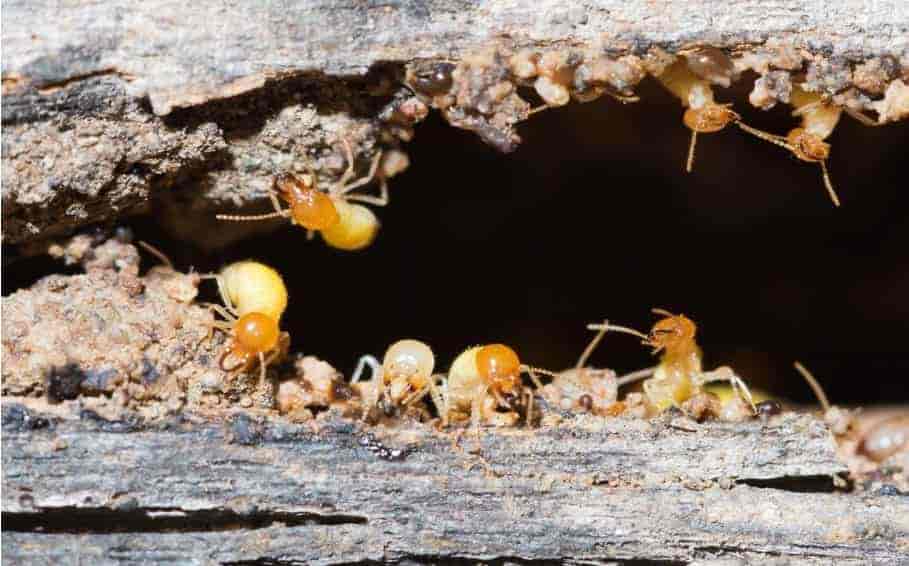Termites are a huge problem in the United States. Luckily, there are things you can do to get rid of them. Here are some tips to help you.
DIY Treatments
There are many common household items that can kill termites. You can also use soapy water to kill them. However, this does not last very long and you should reapply often.
If you are trying to get rid of termites, you should first detect the infestation. If the infestation is located on the outside of your house, you can use a termiticide spray. You should reapply the spray every few days to keep the termites from coming back.
Vinegar Kills Termites
Vinegar is one of the most effective home remedies for termite control. This acidic agent is effective in softening the exoskeleton of termites, which causes them to decompose. It also provides a protective coating that keeps termites from entering your home.
Lemon Juice And Vinegar
You can also use the combination of lemon juice and vinegar. This combination will kill termites on contact. Spray the mixture on nooks and crannies. You can also apply the mixture on real mounds.
Termite Baits
Termite baits are a termite control method that involves placing small, insecticide-laced baits into the soil surrounding your home.
The baits are typically about 30 cm long and are fitted with a lockable cap. This makes them virtually unnoticeable to the eyes of the homeowner.
In laboratory tests, termite baits have shown some promise in terms of reducing the population of termites. However, more research is needed to confirm these findings.
The most effective locations for baiting are areas with a warm, tropical climate. Baits can also be effective in areas with a history of retreatment.
Baits are usually installed at fixed intervals around the perimeter of a building. They can be installed above ground or underground.
Baits are a relatively eco-friendly termite treatment method. However, they do require thorough monitoring and careful installation. The effectiveness of termite baits varies depending on the time of year, the foraging season, and the amount of food available.
Baits can also be integrated with other methods of termite control, such as barrier treatments.
Baits are also effective in areas where liquid termiticides are not allowed. This includes areas where the soil is too wet for soil treatment or where liquids may affect the environment.
Baits can be used in inaccessible crawl spaces. However, they require careful monitoring to avoid unintentional contact with children or pets.
Baits also require a long time to take effect. You may have to wait several months before you see results. For this reason, it is important to inspect your home monthly.
If you are worried about termite infestation, hire a professional pest control company to assess your home and provide a free termite inspection.
Baits may be more expensive than liquid treatments. You may also have to pay for a renewal fee each year. The initial cost of treatment may also depend on the size of your home.
Chemical Termite Barrier
This method involves injecting a liquid chemical into the soil of your home.
The chemical then kills termites when they come into contact with it. The life of the treatment depends on how thorough the application is, and how well the product has been spread.
These chemical applications are the best when used with other preventive methods. They can be mixed in the soil so there is no disruption to the property.
In the past, chemical treatments were not permitted on new homes, but they are now required by the building code.
To prevent termites, a chemical termite barrier is applied around the perimeter of the building. This is important because termites are able to sneak through cracks and holes. These chemicals get into the soil, kill the colony, and prevent termites from coming back.
A reticulation system can also be installed, allowing the chemical application to be replenished easily. Installing a chemical termite barrier is a much more cost effective method than paying for expensive repair bills.
Beneficial Nematodes
Beneficial nematodes for termites can be purchased at home and garden stores. You’ll need to mix them with water and apply them in the infested areas.
You’ll need to wait 48 to 72 hours before you can check on the nematodes. You can apply a second round of nematodes in a week or two.
When you buy beneficial nematodes for termites, you’ll want to choose a brand that’s specifically designed for termites. You’ll also want to be sure the nematodes you purchase are organic. They can be purchased in granules or in a sponge.
The best way to apply beneficial nematodes for termites is to mix them with water. You can use a watering can or a backpack sprayer. Then you can apply the mixture on the infested areas of your home.
You should also remember to monitor the area for at least a week after applying the nematodes. This will help to ensure that the nematodes are working. If you see signs of an infestation, you should dig up the affected areas and apply the nematodes again.
You can also purchase beneficial nematodes in the form of soil drenches. This is a more convenient way to apply the nematodes.
Last Resort – Hire A Professional
If you have a large termite infestation, you should consider hiring a professional to do the job. You can find a professional termite exterminator at a local pest control company. These companies can also offer regular inspections and treatments.
Preventing Termites By Getting Regular Inspections
It may seem like an unnecessary expense, but these little guys can cost you thousands of dollars in repairs.
Plus, they are hard to detect. A professional inspector will be able to find the telltale signs of a termite infestation, and provide you with a treatment plan to combat the infestation.
The average inspection takes thirty to forty-five minutes. The inspector will look for the signs of termite activity in your yard, foundation, and surrounding property. They will also look for cracks and holes in the foundation, and for signs of water leaks and wood damage.
A professional inspector will also be able to identify the best practices for preventing termites. For example, installing a vapor block barrier in your crawlspace can help prevent termites. Also, make sure to keep the humidity levels down in your home. High humidity levels can attract termites.
In addition, a termite inspection can also identify a number of other issues related to termite infestations. You may need to have your gutters repaired or your air conditioner’s condensate lines replaced. It’s also a good idea to fix leaky faucets and pipes.
Final Word
There are a variety of DIY termite treatments available that can be used to help get rid of termites from your home.
However, it is important to note that not all DIY termite treatments are equally effective in eliminating the problem. Natural methods such as vinegar, natural oils, and nematodes may be helpful in reducing the number of termites present but may not completely eradicate them.








